Thermalright HR-10 2280 cooler details
One of the most powerful SSD coolers reminds a bit of the era of massively finned heatsinks that used to be on motherboards. Thermalright is well known for producing small coolers with a large number of fins. Such a concept in the form of the HR-10 2280 cooler should score points on SSDs as well. And it does so even in comparison with almost 60 competing solutions.
Thermalright HR-10 2280 cooler details
Over the past few years, most manufacturers’ idea of passive coolers for components with lower cooling requirements has changed. Instead of radiators where one fin after another is stacked on top of a heatpipe, designs created by milling monolithic lumps of aluminum are often preferred. These have a smaller fin area for comparable dimensions and weight, but again are cheaper to manufacture. How the clash of these concepts can look like in practice is well illustrated by the analysis of the Thermalright HR-10 2280 cooler. The “old school” design hasn’t said the last word yet.
After experience with standalone graphics card VRM coolers or motherboard chipset coolers, Thermalright has also taken on others in the field of SSD coolers. The cooler with the model name HR-10 2280 is really impressive to behold. It is a more complex design than the ones you normally encounter. It is on the same base as more powerful CPU coolers. Meaning that there is a heatpipe attached to a copper block that dissipates the heat of the thinner fins.
There are 44 fins (made of aluminium), with a surface area of approximately 660 mm² per fin. The thickness of the fins is 0.3 mm and the spacing is 1 mm. So, for example, compared to the competing cooler Axagon CLR-M2XL significantly smaller, but in terms of total surface area, the Thermalright HR-10 2280 has a clear advantage. However, smaller fin spacing is more restrictive to circulating air and thus higher system cooling pressure is required to extract the maximum TDP.
The surface of the cooler fins is perforated, which can contribute to better results, especially in situations where the cooler is oriented upwards and there is less airflow around it.
In addition to the heatsink, a backplate is also included in the package. This is important mainly for mounting (the SSD is clamped between the finned heatsink and the backplate), but it is also metal, equipped with a thermal pad and thus also contributes to cooling to some extent. The thermalpad backplate is half the thickness (0.5mm) of the millimeter thermalpad on the base of the heatsink.
The surface of the thermalpads is characterized by a fine pattern for the best possible contact (over the largest possible area). The stiffness of the pads is quite low and they tend to tear during disassembly (especially the thinner pad on the backplate), so either proceed with great care or expect that you may need new thermalpads when reassembling.
Only M.2 SSDs with a length of 80 mm are supported. Shorter ones would not overlap the base, making it impossible to install in the slot, and longer ones overhang it, so optimal contact will not be ensured in all places. As for support for thicker double-sided SSDs that also have memory modules on the bottom, we haven’t seen anything in Thermalright’s materials about that and we’ll try to get some official word on it.
However, the screw mounting holes in the backplate do not copy the screw thread exactly, they are rectangular, and there is some flexibility with respect to the different thickness of SSDs. The question is whether it’s big enough to make everything work with even the thickest SSDs.
While high pressure is beneficial in terms of heat transfer efficiency, it should not be overdone in this respect either. As a result of excessive pressure, PCB deformation may occur, which may no longer suit the SSD and it may not work, at least until it has been corrected. We will contact Thermalright further on this matter and if we can get clear information on compatibility, we will modify this text accordingly.
The total weight of the cooler without the SSD is 90 grams, of which 77 grams is the heatsink itself. The design of the Thermalright HR-10 2280 looks luxurious thanks to the nickel plating of the surface as well. We didn’t encounter any manufacturing flaws, the structural execution is really precise even in details.
When mounting the cooler on an SSD, you need to make sure that the backplate does not collide with the cutout in the PCB, which is designed to mount the SSD to the riser, and in turn also with the housing of the M.2 slot. And at the same time, you need to fit everything in such a way that it is in contact with all the chips that need to be cooled. So especially with the controller and memory. The VRM usually doesn’t get significantly hot with SSDs, as it operates with relatively little electrical current.
From the aspect of compatibility with surrounding components, one more parameter/dimension is important – height. Thermalright lists 43.8 mm, which is however the sum of the heatsink with the backplate. Protrusion from the SSD itself is smaller, “only” 41.6 mm. Installing it in a slot under a card is of course out of the question, but otherwise (in a slot that has nothing covering the top) this cooler is still small enough to fit in 1U format cases.
Methodology
The tests take place in a wind tunnel that substitutes for a standard computer case. Four Noctua NF-S12A PWM@550 rpm fans are used for system cooling in a balanced ratio of two intake to two exhaust fans. The intake air temperature is strictly controlled and is kept within a narrow range of 21–21.3 °C for maximum possible accuracy.
In line with findings from measurements of the impact of different positions on cooling efficiency, we test standalone SSD coolers in the first slot, above the graphics card. From board tests we naturally have a lot of results of coolers (referred to as cooler 1 and cooler 2) from other positions as well, but in those cases, it is due to their fixed position.
For testing, we use a Samsung 980 Pro SSD (1 TB). The load is run for 10 minutes (which is enough time in the wind tunnel for temperatures to stabilize) in CrystalDiskMark – sequential read and write cycles. The achieved power draw then is about 6 W, which is the upper limit of what M.2 SSDs can do, and not even models with PCIe 5.0 interface support are supposed to change this.





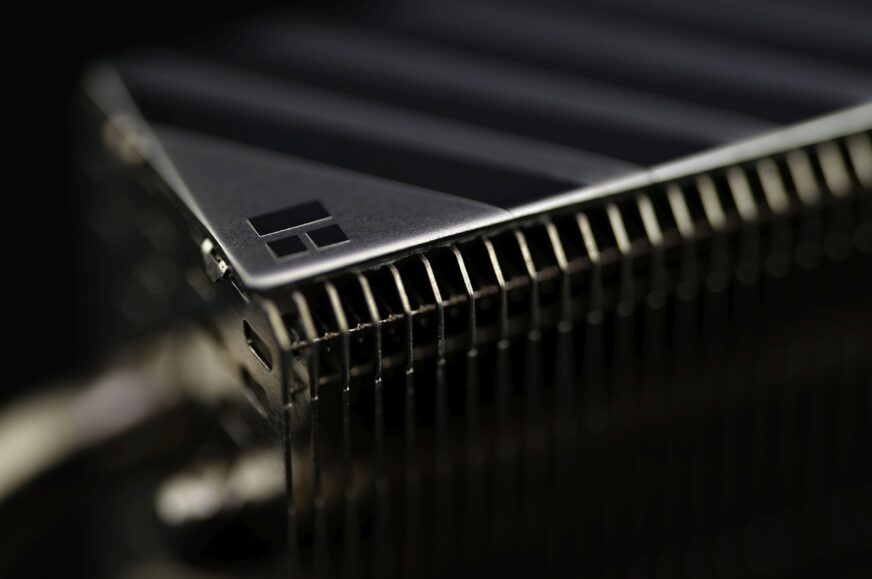
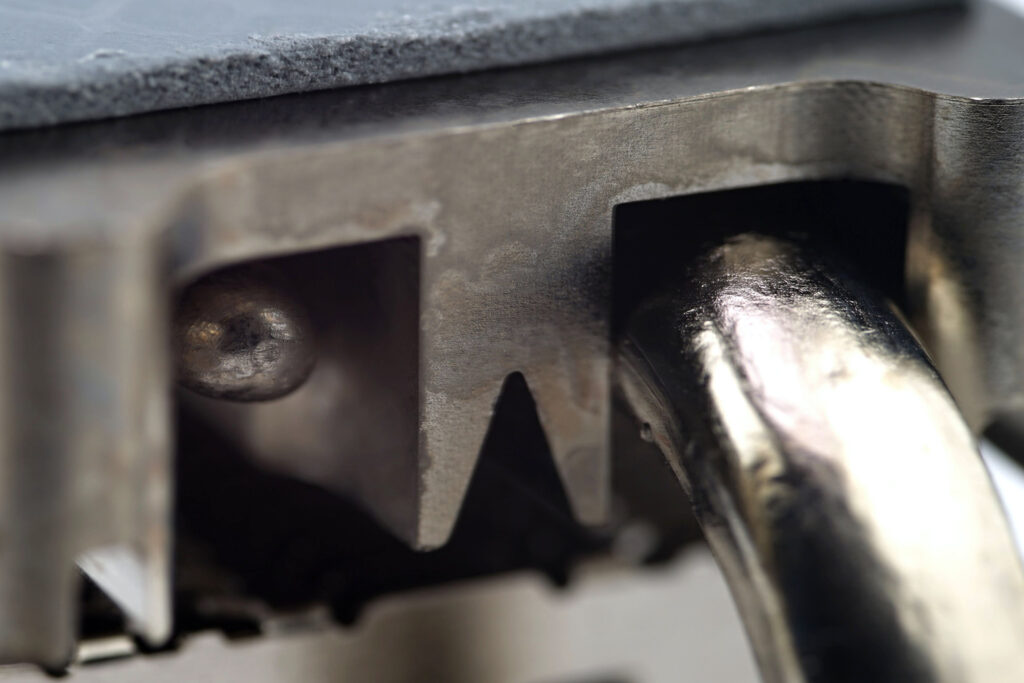


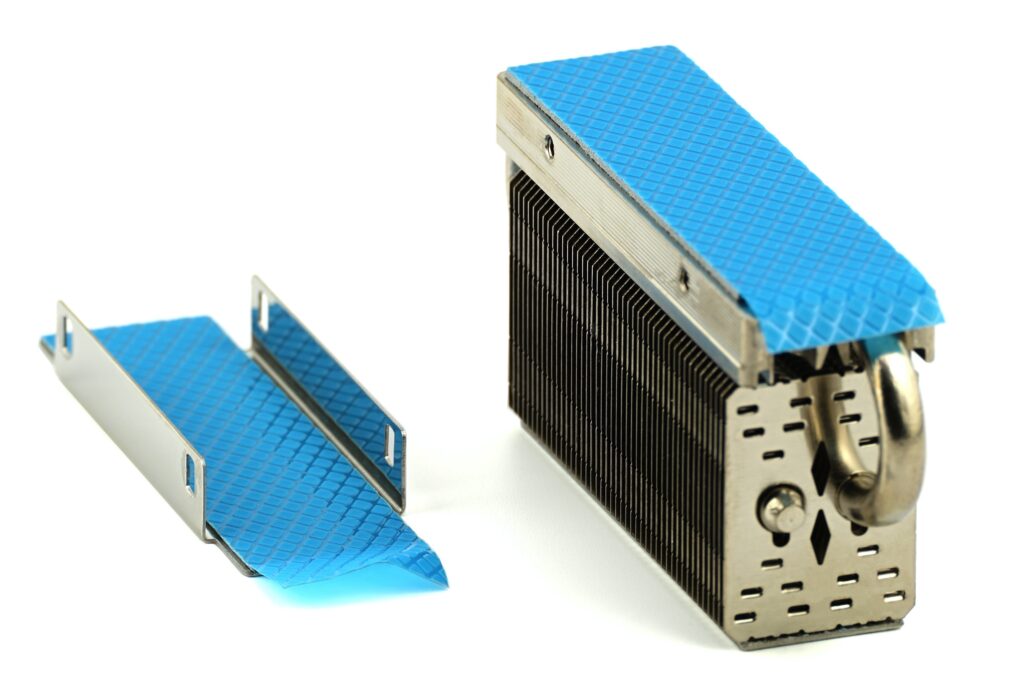
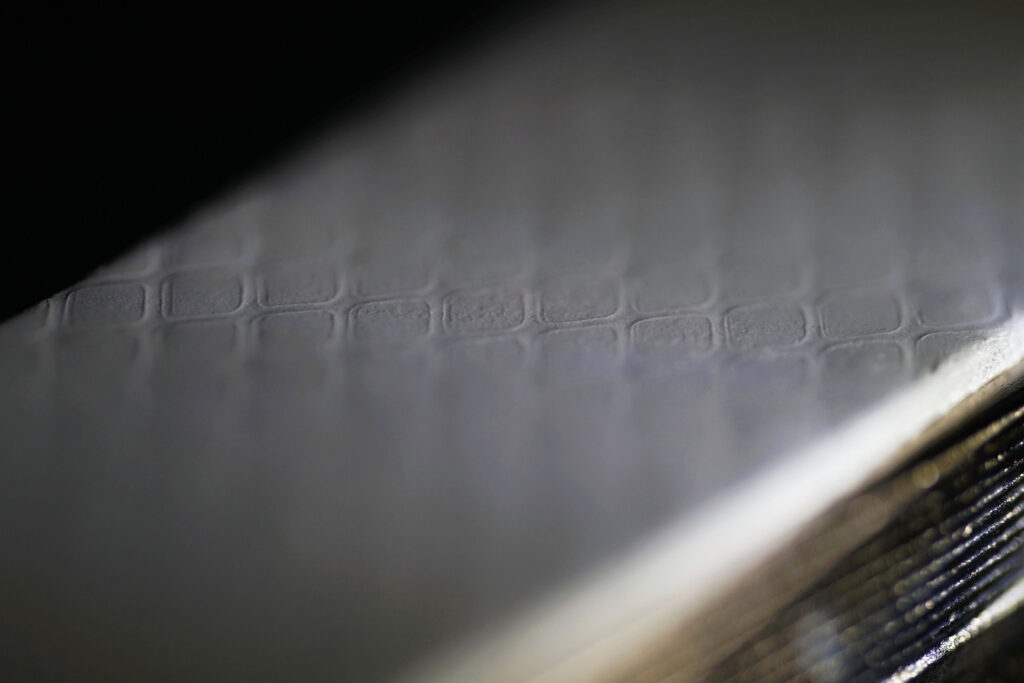
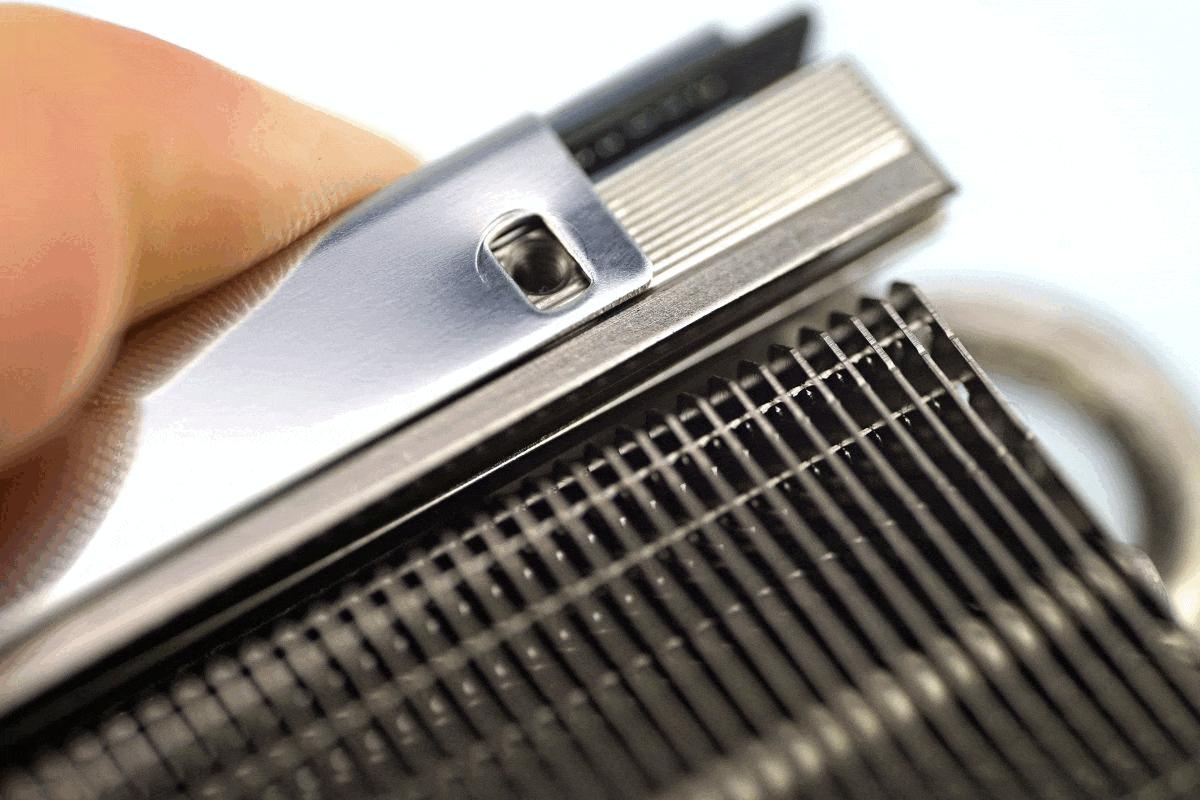
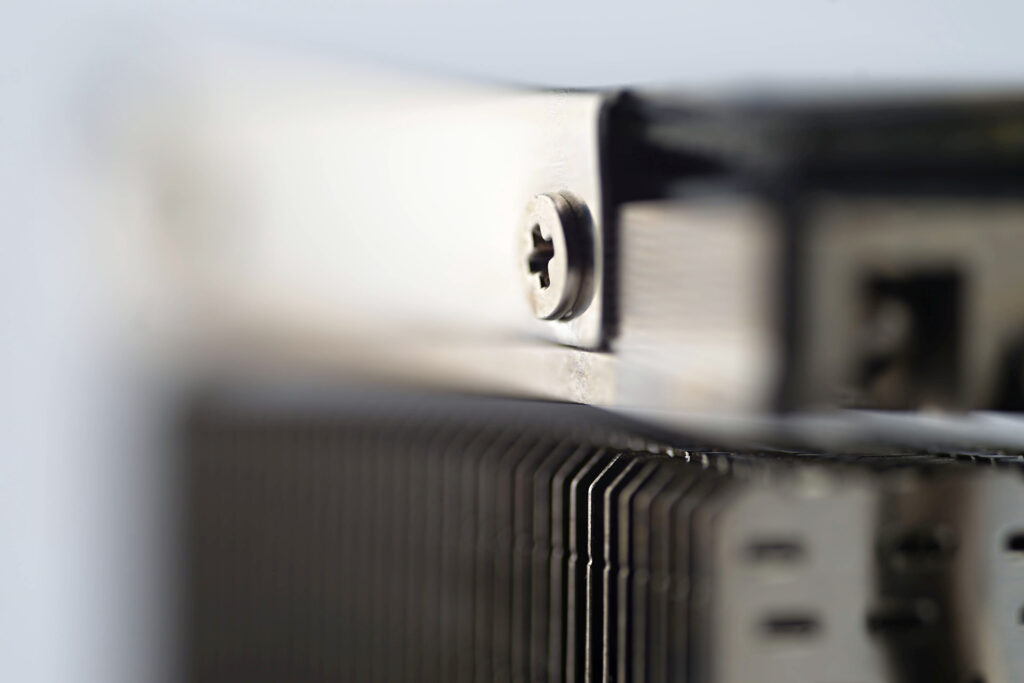
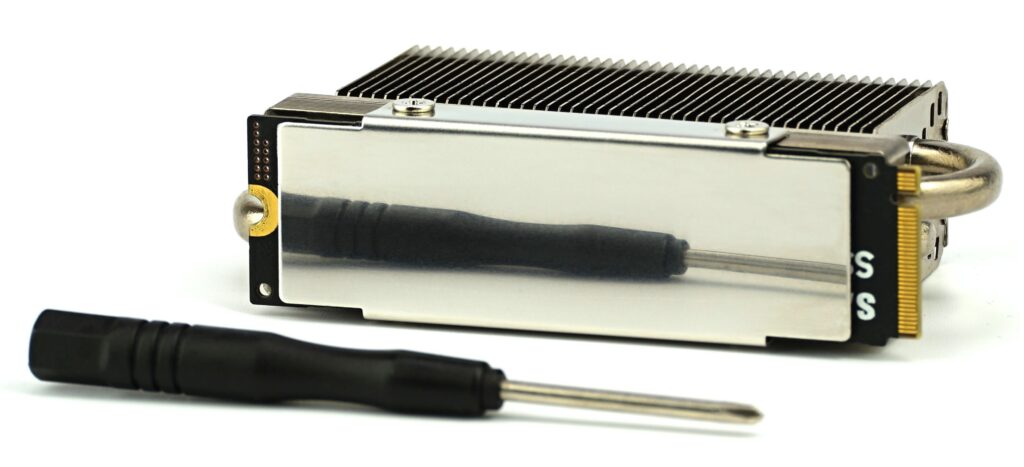
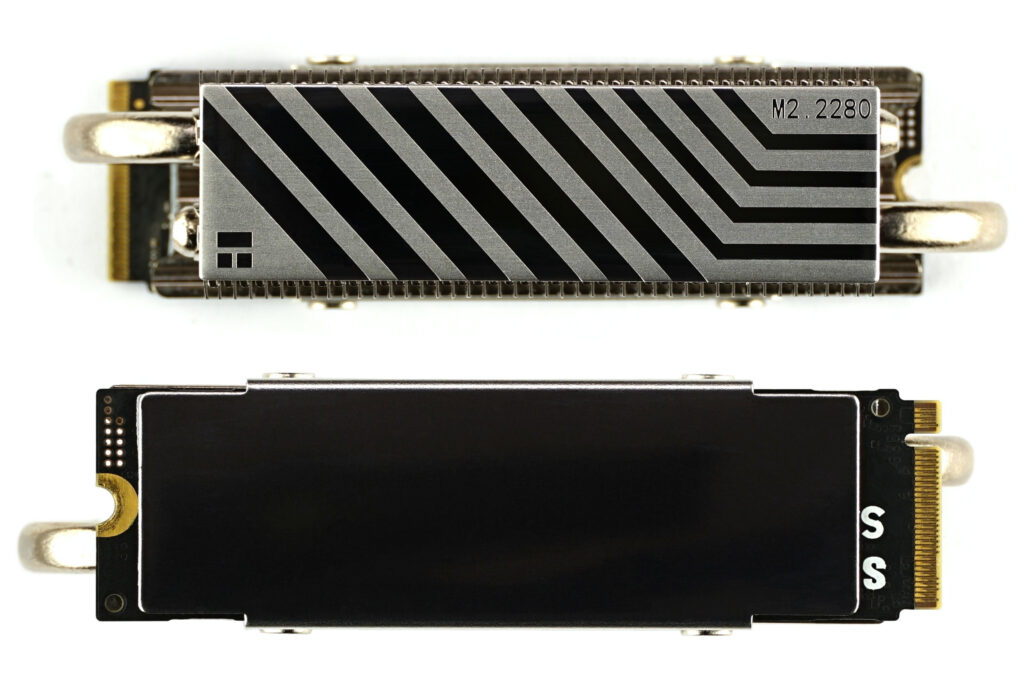
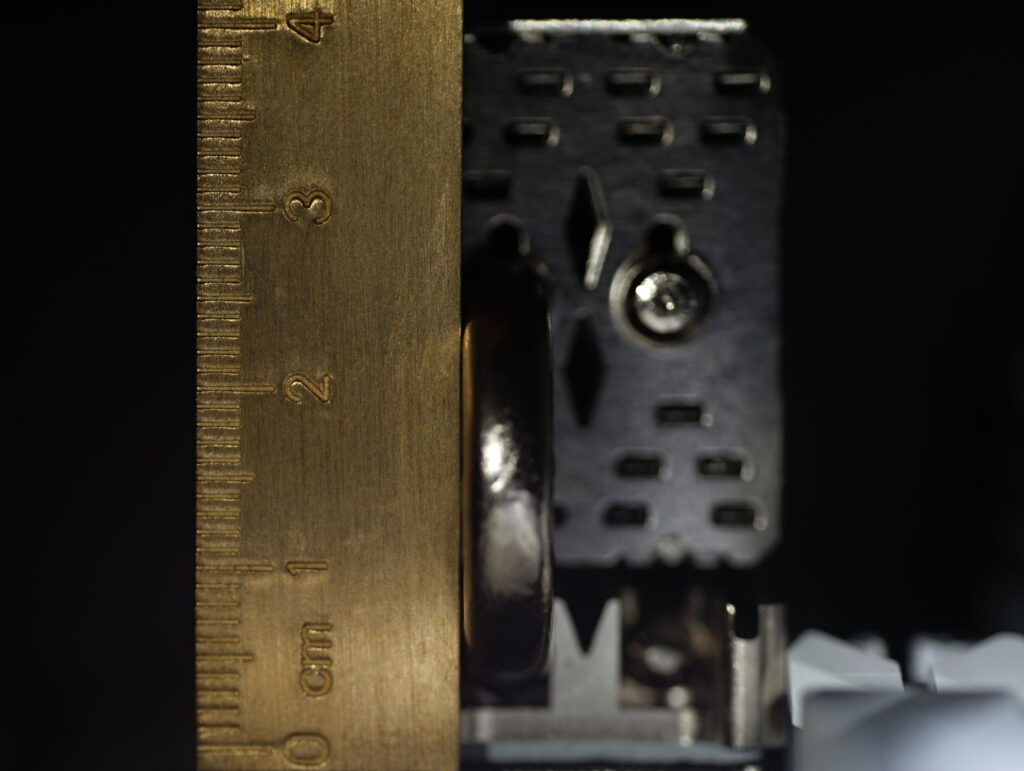
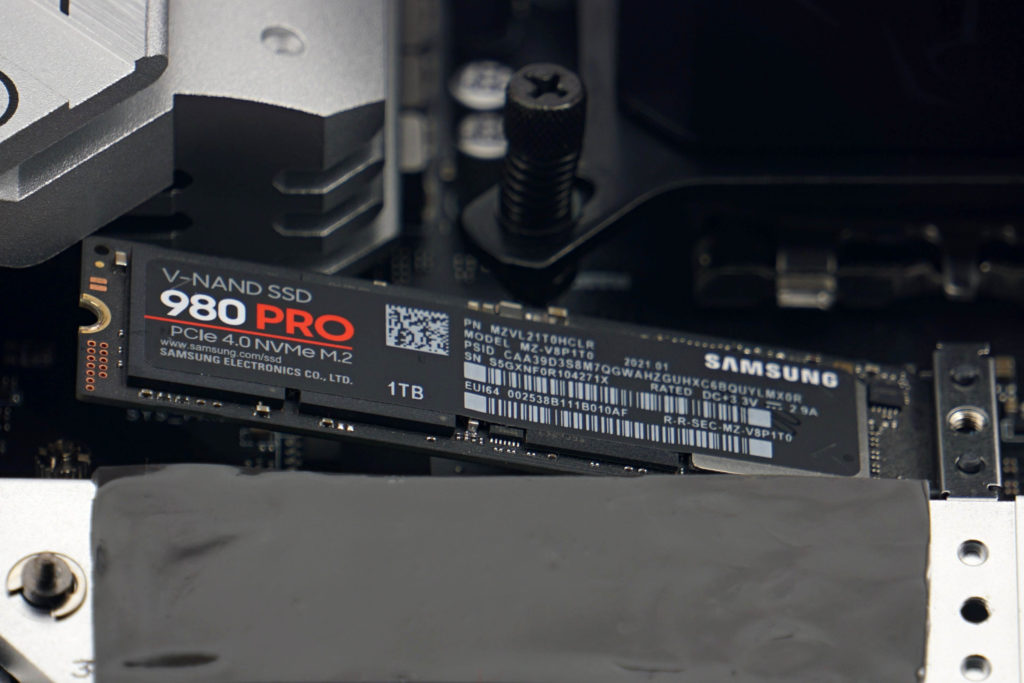

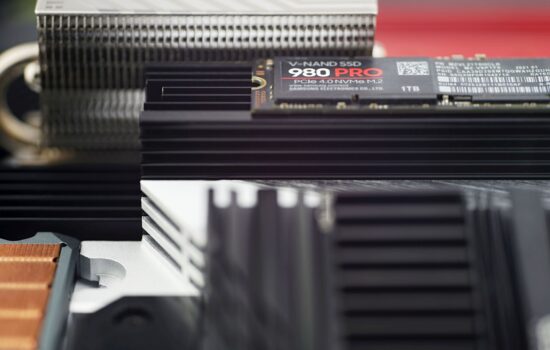
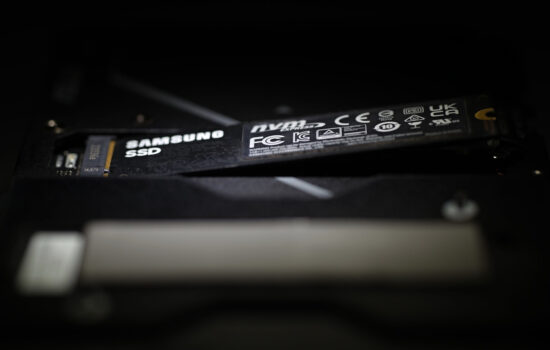



I think it’s a design with missed opportunities.
The fins seem too dense for optimal passive operation and are oriented the wrong way to utilize the typical front-to-back airflow (though they have small cutouts to help with that). The solid top plate also limits its performance in horizontal applications. It’s good mainly due to raw size, but the space can be used more efficiently.
On another topic (methodology), something I wonder is how much mounting pressure affects the results. If it significantly affects it, is it possible to ensure identical mounting pressure across different heatsinks?
Being able to test different airflow conditions would also be great. I think just by adding a passive test (same system but all fans are off) is good enough to get a good idea on how the heatsink performs in most situations, as this test will give insight on what happens when airflow is limited and vertical. For example, I have seen designs where orientation significantly impacts performance (Jeyi Godfin/Goldfin) and designs that are barely affected (Jeyi iGlacier8/Axagon M2XL) based on reviews by BuildOrBuy.
As for the mounting pressure, its influence probably varies. It will be different when there is a weaker pressure, but with contact over the whole surface (a good representative of such a situation is for example the very cheap Axagon CLR-M2Lx coolers, where the SSD is connected to the heatsink with rubber bands) than when there is different pressure in different places of the SSD. Or somewhere there is not even contact. This is also the case with the latest mechanism of a large shared cooler for four SSDs on the Gigabyte Z790 Aorus Pro X motherboard. We have also addressed this in our review and from the detail of the imprints in the thermal pads it can be seen that from the controller to the memory the contact is getting worse, and this is of course also negatively reflected in the results. You can’t really control it, it’s a matter of the mounting system, i.e. a feature of the cooler/motherboard that also contributes to the final cooling performance. It can be influenced by various ways of mounting the motherboard to the case, where it would be an effort to deform the PCB in places of insufficient contact in some way. But this, as you surely acknowledge, is not standard practice and good contact must be ensured in a situation where the PCB of the installed motherboard is flat, i.e. in its natural state.
We considered tests with different airflows, but in the end they had to be abandoned. It would have been more time consuming than we can handle. The methodology for SSD cooler tests was primarily conceived with the motherboard tests in mind so that it could not take too much time. But I definitely agree that really proper tests of passive coolers would deserve several levels of system cooling airflow settings at which they would be tested. But it’s about the fact that there is an upper limit to the amount of time we can allocate for various tests, and to dwell too much on SSD cooler tests would mean that the space for fan tests would be even smaller. And you can see how it is with fans already. Two tests in the last quarter is really weak and from my side the deprivation (of working on fan tests) is getting huge and I’m not happy with this situation at all.